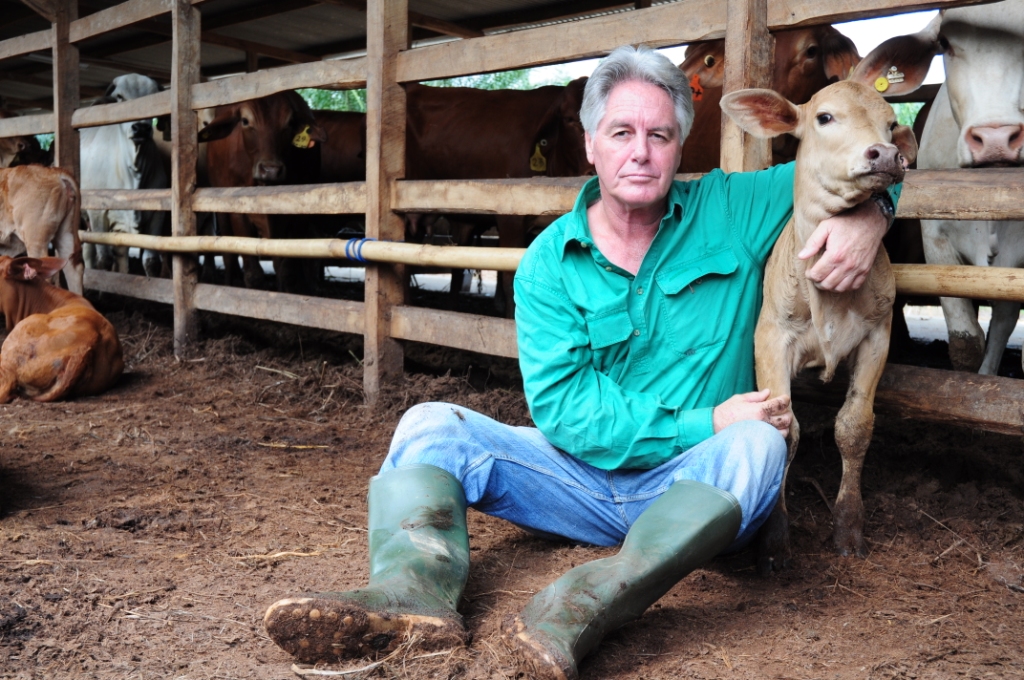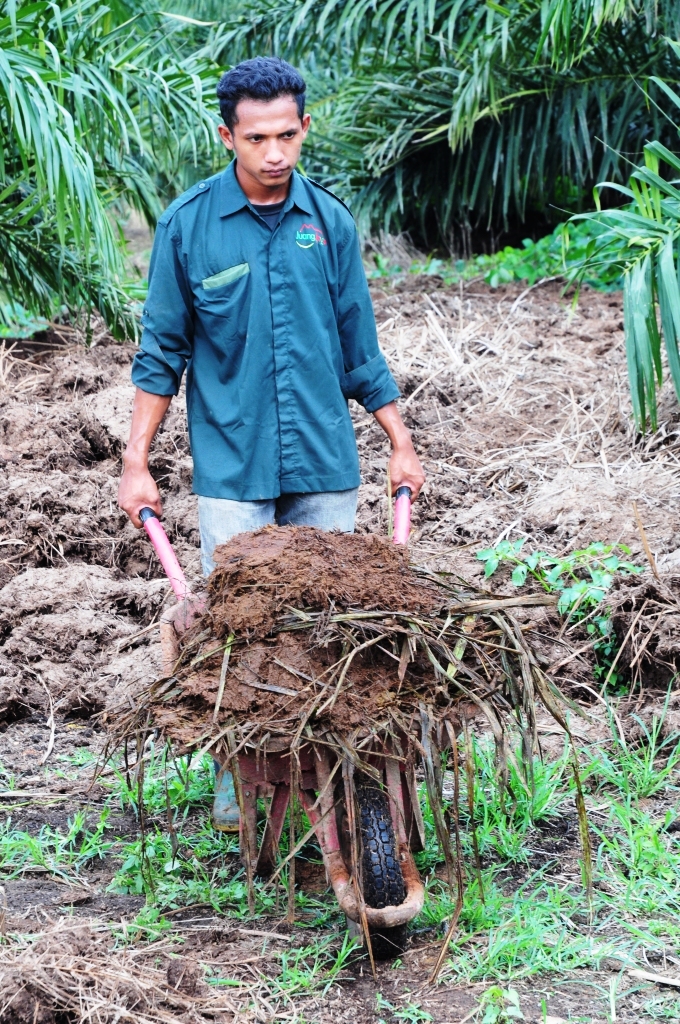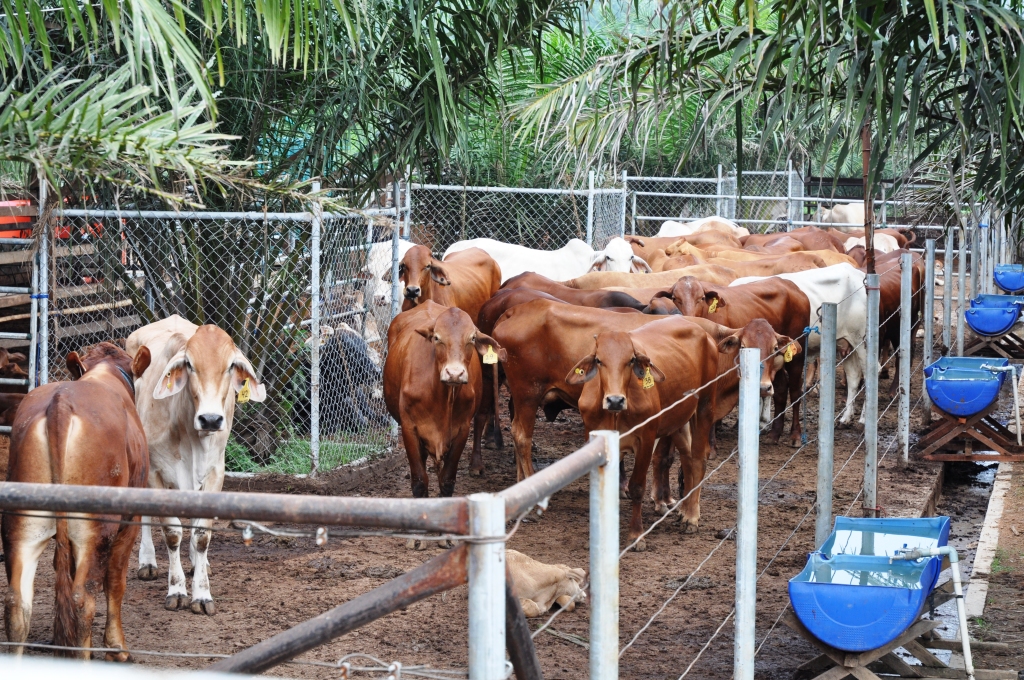The Way Laga Palm Oil and Cattle Project
Host: Lisa Wood/ AGP Indonesia
Written by Lisa Wood – Traceability Officer, AGP.
What is Way Laga? In very simple terms, Way Laga is a research project that aims to answer the questions of:
- How do breeding cattle perform when their diet is based on waste palm oil (sawit) leaves?
- Does a base diet of sawit leaves negatively affect their reproductive ability?
Again, in my very simple terms, the answers we have learnt so far are:
- The girls (breeding cattle) respond beautifully.
- No, it doesn’t. Most of the girls have produced their second calf.
The actual proper definition is in the little blue box at the top of its Facebook page. Technically, the answers are still being researched. http://www.facebook.com/pages/Way-Laga-Cattle-Palm-Integration-Project/351227811662621?fref=ts
How do I know this? Because I have the fine task of having to hassle people into giving me data to input so that Dr. Ross can make his reports to the Northern Territory government and other stakeholders in this project. I sometimes wonder how many other places have difficulty converting their evidence from the field into data that can be compiled to become research that can provide answers about performance.
This is possibly the second or third biggest challenge of my job; it is also the task that brings me the most joy. I get excited when the results come through of pregnancy testing that has been done. I love getting the information that a bouncing baby calf has been born and learning what their birth weights are. I also like seeing the patterns in the way the cows go through their weighing and pregnancy testing sessions. There are two girls in the project that I would put money on as being best mates.
 Dr. Ross with one of the calves born at Way Laga.
Dr. Ross with one of the calves born at Way Laga.
I managed to get Dr. Ross, the Australian vet that is overseeing this project, to write a few words. Ross has been involved with Indonesia and Australian cattle for about 20 years now, and is my brains trust when I need/want a history lesson . . .
Indonesia cannot supply adequate numbers of beef cattle to satisfy national consumption requirements.
As a result it has restricted feeder cattle and beef imports with the aim of encouraging an increase in domestic production.
In response to this PT AGP has developed a joint venture project with MLA and others to develop a viable large scale cattle breeding model which will have the potential to contribute significantly to self sufficiency in the long term.
One of the primary needs for breeding cattle in large numbers is a high volume supply of low cost feed resources.
Indonesia’s massive palm plantation industry has the potential to offer this supply of cheap feed as well as “free” land, as cattle can be managed on existing palm plantations with the additional benefit of faeces being available to the plantation to substitute some of their imported fertiliser needs.
Indonesia has about nine million hectares of palm plantations providing a massive potential resource for breeding cattle. If such a production model can be developed then the only possible source of supply of these breeding cattle needed to get started is from Australia. Breeder imports in the order of several millions of head will be needed to replace the declining domestic herd let alone the shortage of feeder cattle as demand rises due to increasing population and individual spending power.
The supply of breeders to this production model represents a new and potentially huge market for northern Australian producers.
See the links below to the Way Laga facebook and You Tube presentations which describe this project in more detail.
Last year
http://www.youtube.com/watch?v=w_C0Qn3UL4M
This year’s update (length six minutes)
http://www.youtube.com/watch?v=4C2U8FE3Ly0
And now back to me (Lisa). There are a few points Ross touched on that I would like to expand a bit further.
Back when in another post, I talked about the limited employment opportunities in a rural setting. Each Palm Oil Plantation has a community of workers near (in) it. While the husbands work, the wives are often unemployed. Working in a Palm Oil Plantation is a NOT maximum wage earner. These workers are near the bottom tier of social economy, in addition to being a one income family.
 Two women weight some of the day’s collection.
Two women weight some of the day’s collection.
The addition, a Breeding Station within the boundaries of the Palm Plantation has the potential to give these women the opportunity to work and earn a wage, thus benefiting their family, not to mention their own sense of self worth and other associated benefits. It has the potential to address rural unemployment AND Indonesia’s acute beef shortage in one neat package.
The other main point I wanted to pick up on was the manure/fertiliser. Way Laga is essentially a story of good permaculture principle. The cows eat the excess leaves, the cows convert the leaves (and thrive in the process), and the manure is returned to the tree, so the tree can create more. The potentials of this project really give me a nice warm fuzzy feeling.
 Heavy machinery is avoided, thus creating more employment in a healthy outdoor environment.
Heavy machinery is avoided, thus creating more employment in a healthy outdoor environment.
We have three permanent staff looking the cows and their calves. Every few days, they will clean out the pens. This mix of bedding (shredded coconut husks, a natural, waste agricultural product), dropped leaves and manure goes into a big pile where it sits for a while. After that it is spread around the bases of the trees, thus reducing the need for imported fertiliser.
As this research project comes to a close and proves is viability for commercial purposes, my dream for the future would be that the Indonesian students who have been a part of the Northern Territory Cattle Association program would find employment within this type of setting, if that is what they desire.
If you haven’t already, please have a look at the facebook page. There are many more photos and much more information, not to mention a really cute video of weaner calves having a munch on the sawit leaves.
Stay tuned tomorrow for the last instalment of my hosting week on Central Station, where we finally venture into an Indonesian abattoir.

